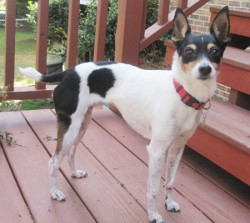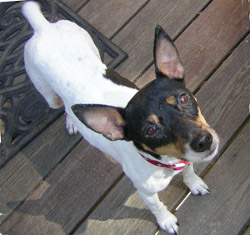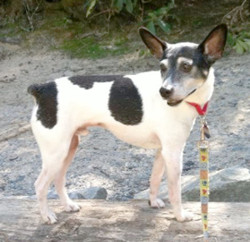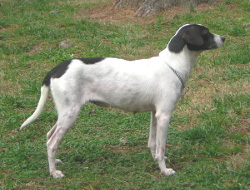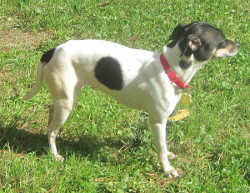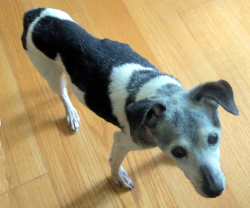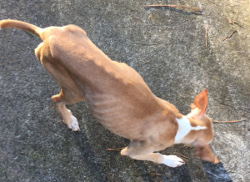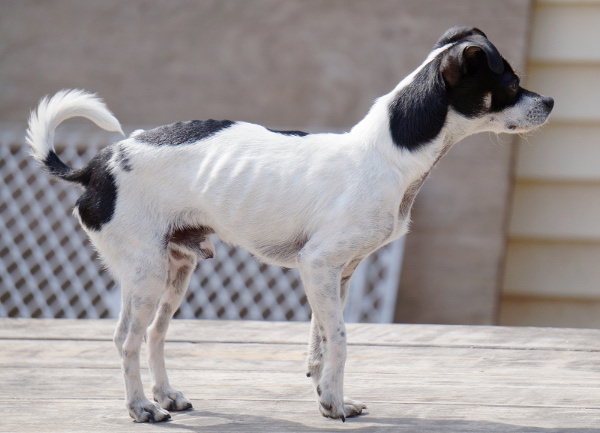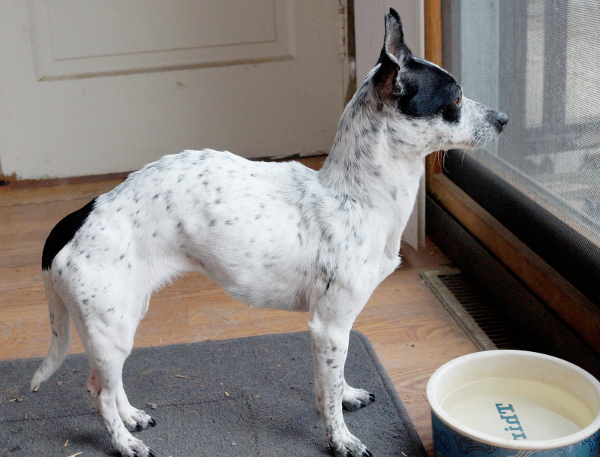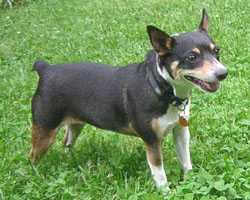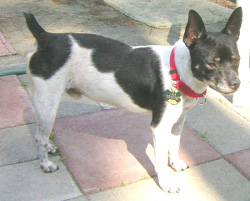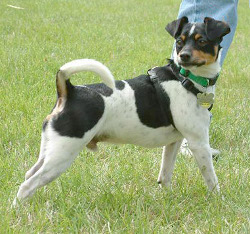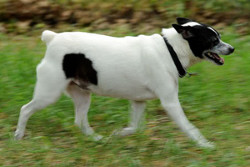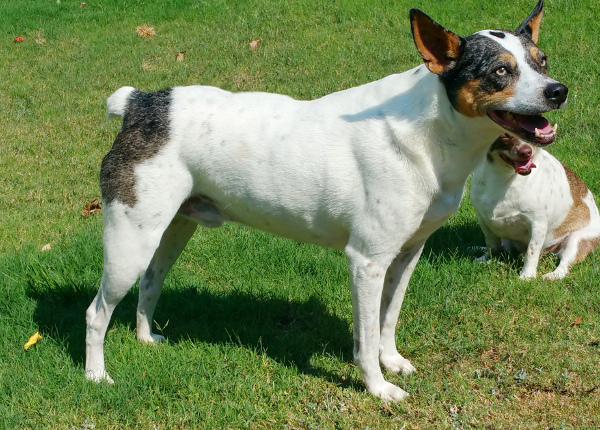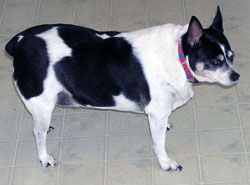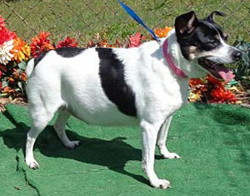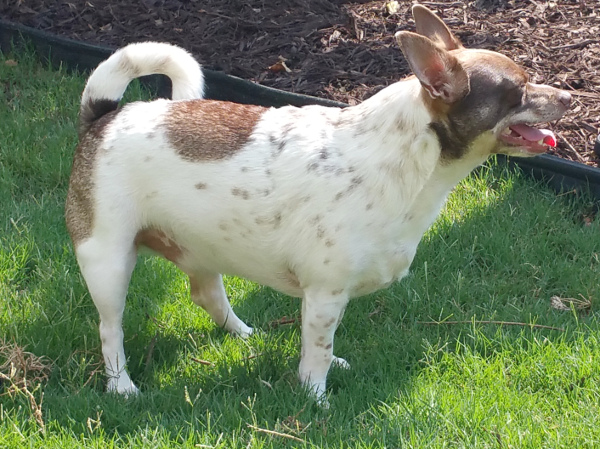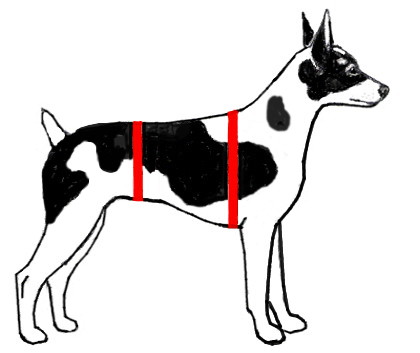
- The “ideal” weight for a Rat Terrier is approximately the weight where the last 3 ribs are just barely visible when the dog is standing in good light or can be felt with a light touch. You should not have to prod to feel the dog’s ribs. If you can’t feel them, or if you have to apply pressure to feel them, the dog needs to lose weight.
- Look at the dog from the side. There should be a definite “tuck-up” in the tummy area (between the rib cage and hind legs). The “height” of a Rat Terrier’s waist should be no more than 3/4 the “height” of the chest, as shown above left.
- Stand directly above the dog and look down. Viewed from above, a Rat Terrier should have a definite hourglass shape, with a waist noticeably narrower than the rib cage and hips. If such an indentation is not there, or if it bulges out, it is diet time!
If you are unsure about your dog, ask your vet. Do not assume that because your vet has not told you that your Rat Terrier is overweight, his weight is fine. Many vets do not mention weight issues unless they’re specifically asked because so many pet owners are easily offended by the idea that their dog is too heavy. Plus vets are used to seeing so many overweight dogs, including many other breeds that are naturally denser and meatier than RTs, that they may be overly generous in assessing what is best for a Rat Terrier. So ask very specifically if your dog is overweight, with an open attitude that invites candid discussion, and if your vet indicates even the slightest possibility of excess weight, take it seriously! Ask what the ideal weight is for your dog and what markers you should be watching for.
Take a look at these Ratties, who are at a healthy weight:
You can see too much ribs and hipbones on these Ratties who are underweight:
When a dog is so underweight that it has lost most of its body fat and also suffers muscle loss, it is emaciated. With an emaciated dog, you can easily see the dog’s ribs, backbone and jutting hip bones:
These Ratties are overweight, with very little tuck and visible neck rolls. You would have to press pretty hard to feel their ribs:
When a dog is at least 20% overweight, having scarcely any tuck-up, no visible ribs, big fat rolls around the neck and shoulders, and a chunky chest and butt, it is obese:
Some dogs are so obese that they exceed 30% of their ideal body weight. They have no tuck-up at all, their bodies have no shape (other than round), and their heads look disproportionately small for their bodies. These dogs are considered morbidly obese and are at great health risk:
Ready for a quiz?
Which of the following Ratties do you think is at a healthy weight? Which are underweight or emaciated? Which are overweight or obese? Answers are at the bottom of the page.
Scroll down for answers…
Keep going…
Keep going…
ANSWERS TO QUIZ ABOVE
1. Healthy weight, but at the bottom end of the range and should not lose any more.
2. Overweight and on his way to obese if changes are not made.
3. Underweight. You can see ribs too easily, but no hipbones.
4. Emaciated. He is showing all his ribs, backbone knobs, and jutting hipbones.
5. Healthy weight.
6. Overweight. See the neck rolls?
7. Overweight on his way to obese. The neck roll in particular makes his head look disproportionately small
8. Healthy weight.
9. Emaciated. The ribs are harder to see with black fur, but the backbone and hipbones are clearly visible
10. Healthy weight, but at top end of the range and should not gain any more.
11. Overweight and maybe even obese. A side view would help determine that.
12. Overweight. See the neck rolls? And with his fur so short and glossy, you probably should be able to see the hint of the last ribs.
Is your dog too heavy? Click HERE for Rattie Weight Loss Regimen
Is your dog too skinny? Click HERE for Rattie Weight Gain Regimen
